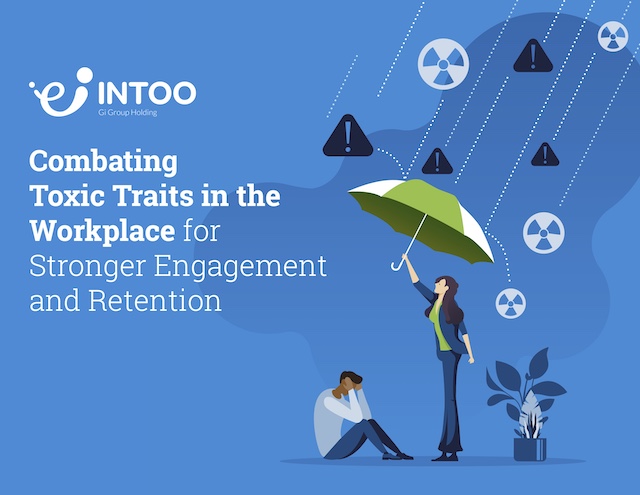A crucial component of preserving employee engagement and motivation at work is feedback.
Additionally, the use of multi-rater feedback, sometimes known as 360-degree feedback, is rising. This kind of feedback provides a variety of perspectives on employee performance.
360 feedback offers several advantages when done correctly. These include enhancing team accountability and cooperation as well as minimizing prejudices. However, there are also several drawbacks to this form of feedback.
Later, we’ll discuss things in more detail, but for now, let’s look at exactly what a 360 review is and how it can help your company.
What Is 360 Feedback and Why Is It Important?
The 360 feedback technique of employee assessment gives each employee a chance to get performance input from multiple professionals including and in addition to their manager or supervisor.
A 360-degree feedback program might involve the following individuals:
- the employee
- their supervisor
- their coworkers
- their clients or business partners
360 feedback creates a discreet and thorough method of giving executives and workers vital information and many perspectives, including information they may not receive otherwise. The results of the reviews are provided to the employee in aggregate, so that the employee being reviewed cannot match the comment to the reviewer, which can help protect relationships in the workplace while delivering important feedback.
The best time for a 360 review can vary. 360 feedback from a client or business partner could be more advantageous immediately after a project, when the details are still fresh in everyone’s mind and the learnings can be put to use on the next project. However, feedback from a direct report or a fellow employee could be better received during company review periods, when employees are already in a mindset of self-reflection and goal-setting.
What Is the Purpose of a 360 Review?
A 360 peer review aims to gauge an employee’s performance at work, much like other review methods. However, this feedback also helps employees understand how their whole team perceives them.
The 360 feedback is meant to help each person see their strengths and limitations and offer suggestions for areas of their job that require professional improvement.
A genuinely successful 360 review process also integrates that input with the employee’s personal and professional goals to produce a road map for education and self-development. This is important for any business that wants to increase their employee retention with upskilling.
Employees can develop more quickly and more effectively by receiving regular, helpful criticism from many angles. Additionally, this type of feedback has been demonstrated to enhance employee satisfaction as employees asked for their feedback tend to feel more valued by their teams and employer.
How 360 Reviews Are Conducted
Participants in the review will be given a survey or questions regarding the employee’s work ethics, working methods, skills, strengths, and potential improvement areas. There will be room for written responses to these questions as well. All reviewers can provide more information and concrete examples to back up their comments in this area.
 Why 360 Reviews Are Important for a Business
Why 360 Reviews Are Important for a Business
Feedback provided through a 360 review can not only be instrumental in the ability for the employee to improve their performance; it can also help the organization to establish a uniform employee experience when it is a standardized practice. As part of the regular review process, team dynamics and peer connections can be strengthened through thoughtful feedback.
What Are the Pros of Conducting 360 Reviews?
As long as the assessments are constructive and the workers are prepared to use the input they receive, 360 employee reviews can be a highly effective tool for helping people learn and grow.
1. They give staff members input from a range of sources
360 feedback can provide various perspectives on the same employee as each review member’s experiences working with the employee is distinct. It can help employees gain confidence in the strengths identified by their feedback group. It can also be useful to provide a consensus around the areas that need improvement when multiple people comment on the same concerns.
2. They build and enhance responsibility and teamwork
When employees receive information about their strengths and areas for development from those they work with, they can become better team members. Seeing the positive comments others have made about them can foster a sense of togetherness. Those participating as reviewers will have a greater sense of responsibility resulting from influencing the improvement of their team.
3. They identify particular areas for professional growth
The major result of the 360 feedback process is personal development. Professionals can fine-tune their actions and prioritize areas requiring improvement or additional training with the support of 360 feedback.
4. They reduce the chance that the employee will feel personally targeted
When typical feedback is given one on one, the recipient of the feedback may feel attacked if it is negative in nature. However, the aggregated, anonymous format of the feedback reduces the likelihood of this result. As a result, the employee can focus on areas of improvement without feeling like bias or personal opinion impacted the review.
5. They provide constructive criticism to improve self-awareness
Receiving 360 feedback exposes us to how others view our actions and behavior. Even if the participant disputes the results, it still helps them to understand how they are seen by their colleagues.
 What Are the Cons of Doing 360 Reviews?
What Are the Cons of Doing 360 Reviews?
Even though the following limitations may be experienced minimally, they are crucial for managers and employers to be aware of if they want to use 360 evaluations.
1. Managers may use a small portion of the system for measuring overall performance
A performance management system is not the same as 360 feedback. 360 evaluations can inform growth and feedback that a performance management system provides within a business. Additionally, managers’ efforts to win support for the system’s deployment can make them have unrealistic expectations for this type of feedback system.
2. The 360 process may not be properly incorporated into existing performance strategies
For a 360 feedback method to be effective, it must be used throughout the organization and should incorporate your organization’s overarching strategic goals. The process has to be standardized throughout the company in order for it to be fair and for employees to be accepting of the feedback.
3. The reviews concentrate on employee flaws and deficiencies
We often focus on the bad over the good, which can also be true with 360 reviews. Instead of highlighting the good and coming up with plans to reduce the weaknesses of an employee, some 360 reviews can turn focus solely on the bad, which creates a negative employee experience.
4. The method may call for extensive data collecting and processing
Historically, multi-rater feedback increased the overall number of participants and the resulting time commitment in typical 360 assessments. Thankfully, most multi-rater feedback systems now include online entry and reporting options. This prior drawback has all but disappeared.
4 Ways to Implement 360 Reviews into Your Business
360 evaluations can be extensively used to help create the positive company culture a business requires since they concentrate on behavior.
You could use these reviews when your organization is looking to:
- Encourage cultural transformation
- Achieve a certain business goal
- Improve team and individual effectiveness
- Systemically improve human resource management
One of four popular strategies can be used to implement 360 assessments based on your industry and corporate culture.
1. Manager-assessed feedback
In this 360 review process, managers often collect and examine employee input to identify noteworthy behavioral trends and positive and negative comments before compiling a report.
2. Digitally evaluated results
Each user provides a score across various assessment categories. The digital nature of the feedback makes it simple to compile and distribute.
3. Surveys performed by an outside consultant
Some businesses employ outside consultants to conduct 360 reviews. The consultant compiles data and provides it to you.
4. Direct employee-to-employee feedback
Some forward-thinking firms make use of this method. This works well in organizations with tight-knit teams and high trust.
Consider combining 360 employee reviews with other performance evaluations for ongoing, honest feedback. Examples of other types of evaluations include self-assessments to analyze one’s strengths and shortcomings for both soft and hard skills and quarterly and annual performance evaluations, which discuss how effectively a person performs their job obligations and fulfills goals.
You can ensure your staff members implement the plans you develop with them by conducting annual or quarterly 360 reviews. Additionally, reviews enable you to determine what resources or assistance you can offer and how well they are performing their duties. You might work together to develop a brand-new career development plan or modify an existing one to suit their requirements based on these frequent meetings.
Consider employing 360 feedback surveys in your team the next time performance reviews are due. It is an excellent strategy to support the professional growth of team members and create a healthy workplace culture. In every stage of the employee lifecycle, INTOO helps employers protect their brand through effective candidate experience, career development, and outplacement services. Contact us to learn how we can make a difference for you and your employees.


 Why 360 Reviews Are Important for a Business
Why 360 Reviews Are Important for a Business What Are the Cons of Doing 360 Reviews?
What Are the Cons of Doing 360 Reviews?








